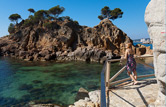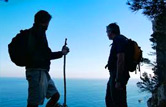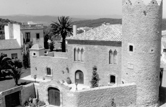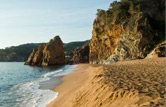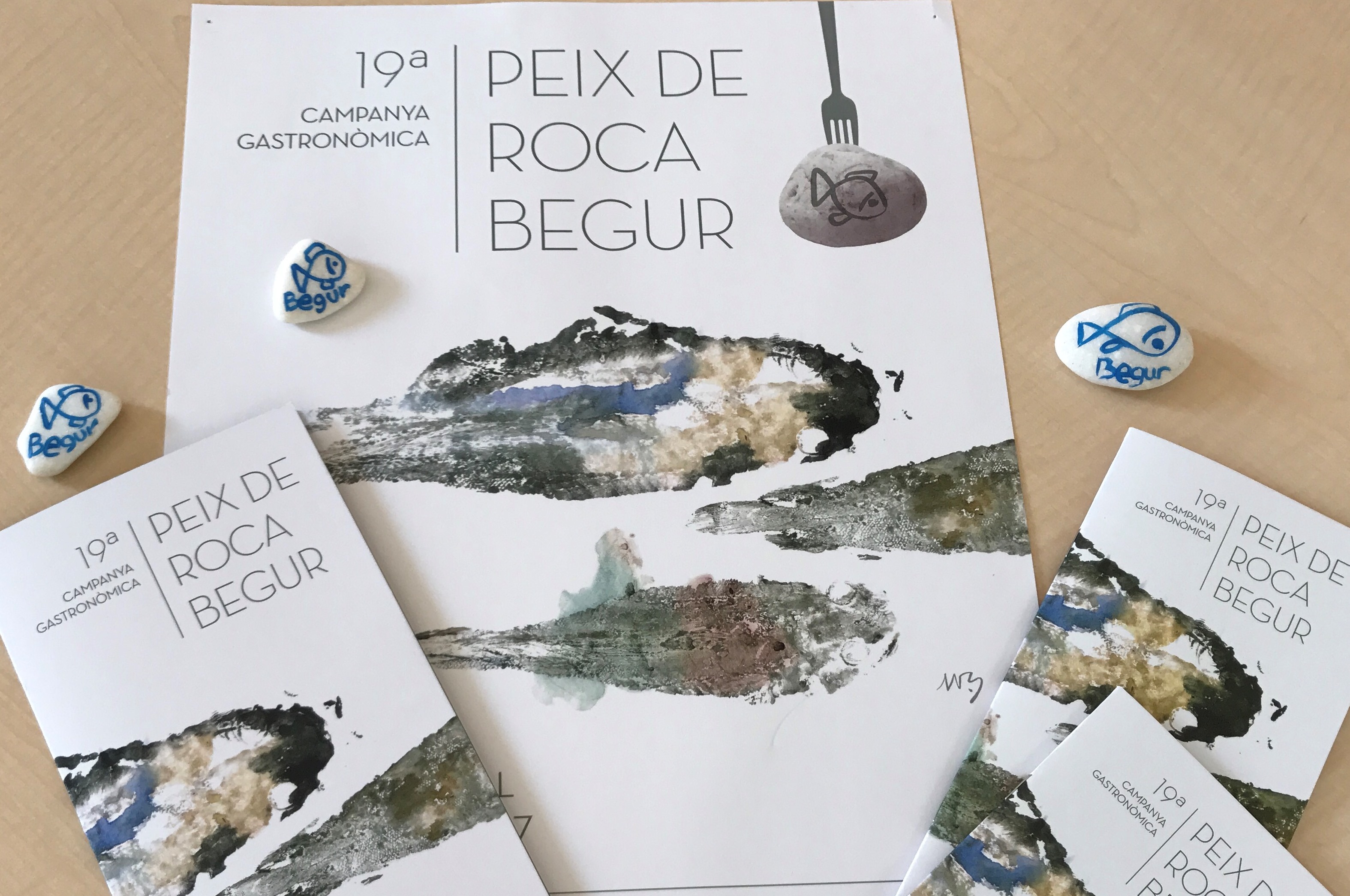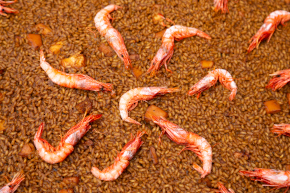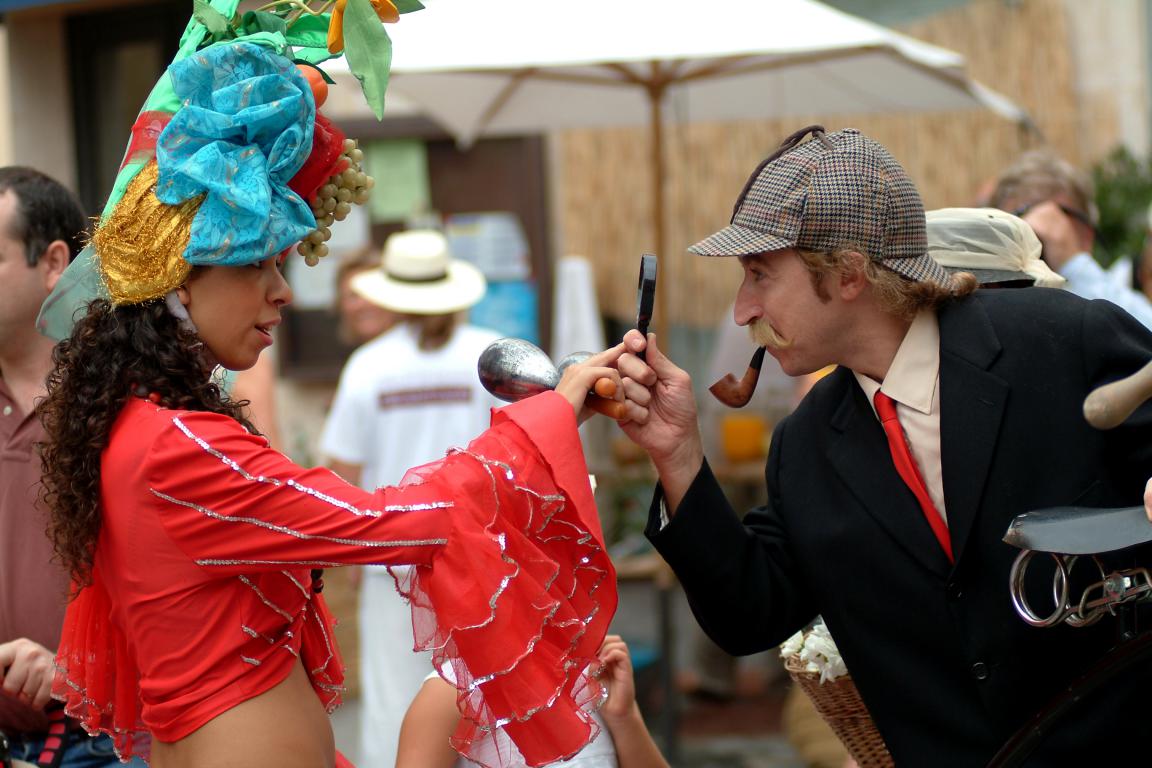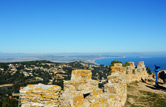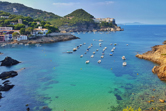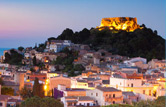
Culture
Joan Vinyoli i Begur
Joan Vinyoli (1914 – 1984) arrived in Begur in August 1954, and came back every summer up until 1978 with his family and friends.
His time in Begur left a profound mark on his poetry, and he wrote and proofread much of his subsequently published work here. He would always sit at one of the tables in the Bar Frigola, or at Can Garreta or a table in Aiguablava, with a little folder of rubbers, poems, blank sheets of paper and postcards, writing as he breathed in the landscape and aromas, as people gradually gathered to chat over a drink before dining, while the women enjoyed the sunshine and the children played.
The poet was dazzled from the very first moment by the beauty of Begur and its coves. The mystique of Begur, the deep sea, the sky, the nights, the constellations, the castles of Begur and Montgrí, the hub of the wheel, the steps, the tramuntana wind, the lighthouses, Cap Norfeu, the boats and the capstans, the rum, the islands, the rice fields, the fish, the nets, the fishermen, the tree that leaves the wood, called by the sea… these are all very much present throughout his work, and have a symbolic content progressively repeated in a kind of poetic spiral, constantly enriched with new experiences.
Begur, then, marked the high point of Joan Vinyoli's life and poetry, a period lasting up until his final years. Which is why he asserted that: "the place of definitive importance at the centre of my experiences of all kinds, in poetry and life, was Begur".
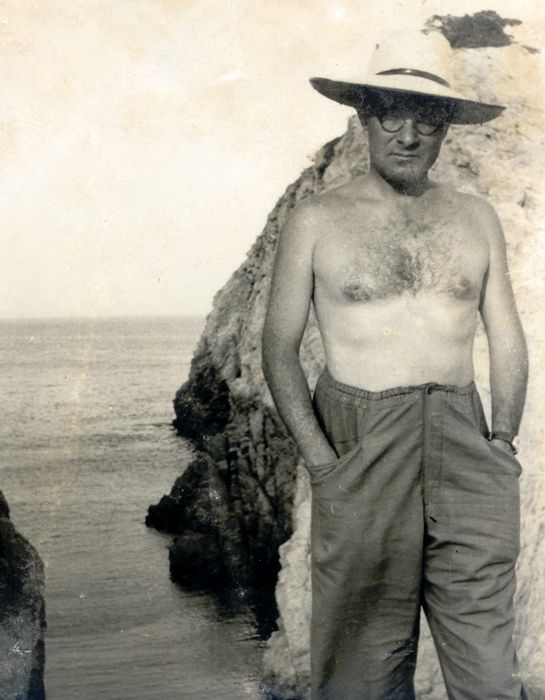
Poet Joan Vinyoli Lookout
This lookout was opened on 12 September 2009, to mark the 25th anniversary of his death.
From the 1964 poem Sunt lacrimae rerum
Night falls, the phantasmagorical night
of the King of Begur, lord of the castle,
the night of lighthouses and fishing lures,
of the towering, star-studded sky.
Everything turns, as a funfair,
but you and I live at the hub of the wheel,
where the movement is imperceptible.
All is Now and Nothing, 1970.
Bar Frigola and Plaça de la Vila
The Vinyoli family and their friends would often go there. It was a meeting place, a place for a coffee, an aperitif, a soirée, sardana dancing and fashionable parties.
From the 1964 poem Sunt lacrimae rerum
Now I am a frightened rat emerging from the darkness
and running to hide in any hole.
But when I recall the friends who have died,
irredeemably, irreplaceable,
I become a sunflower rising from a rubbish heap
and like one speaking in hushed tones,
on a warm summer's evening,
before the smile of the dead that become his own.
Now all together the oboes
sound in Pals and they behold the islands
and I always say as I look at the Tower of Hours:
These things should make you cry.
The evening passes across the rice fields
of Empordà with drops of water.
It is late, time to return to Begur
in the bus that will leave us at the square.
We go to the bar and drink an aperitif with clams
well seasoned with lemon and pepper.
All is Now and Nothing, 1970.
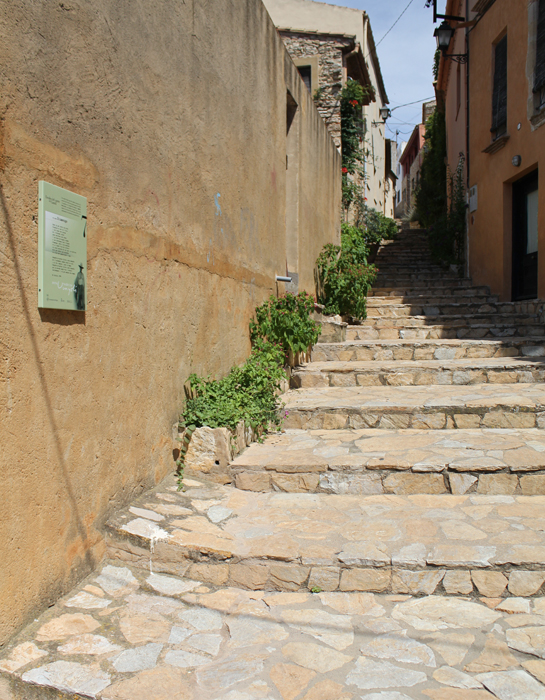
Steps on Carrer del Castell
The steps are one of the recurrent symbols in the poetry of Joan Vinyoli, just a stone's throw from Cal Pallí, and featured in the poems of The Silent One and also Realities, denoting the ascension to a higher state in pursuit of a mystical and physical union, or the dive down into the innermost self.
From the poem Sunday
When through the pines
the sea sounds with the air
and the glasses are filled
with water honeyed by the sun;
when the roses burst open
and the midday flowers burn
on the terraces, the water flies.
Sunday, straight to the steps,
on the level of a high silence
rich in the secrets of cells and porticoes,
looks over the roofs
at the flat sea sparkling, and knows.
After a long struggle, only after
the incessant fight between the rock
and the fire, the flame matures and catches.
After a long struggle, only after,
can the gaze fill and retain
in silence. And the seed ripen in the fields.
El Callat, 1956.
Begur Castle
Joan Vinyoli would get up early to watch the sunrise: "I rise early and signal to the first rays of sunshine from Begur Castle" (Postcard to J. V. Foix). The hub of the wheel represents the centre where mankind's essence lies. Josep Pla had marked Montgrí Castle as the hub of the wheel of Empordà, and Vinyoli borrowed the image to refer to two castles: Montgrí and Begur. The oriental circularity that the poem conveys is as important as the direct experience which lies in the origin of the image, enriched by readings of Friedrich Hölderlin, Martin Heidegger and T. S Eliot. Carrer del Castell is a street of steps, an image of spiritual ascension.
From the poem Sacrifice
I touch the skin of a slashed bull
atop a towering cliff buffeted by winds,
unprotected among clouds.
My hands are stained with red and purple.
Of the climb up and down I always say the same thing,
and repeat the same thing:
at the hub of the wheel
there is no movement.
Cercles, 1979.
Sant Ramon
Vinyoli would come here around dusk to take in the view embracing the whole coastline of Empordà, as far as Cap Norfeu, the Illes Medes, Pals, the rice fields, Sant Feliu de Boada, Peratallada, Torroella de Montgrí, Montgrí and its castle. On the night of St Lawrence they would climb up to the shrine to watch the shooting stars, or "saint's tears".
"Yesterday evening, a windy evening… the view from Sant Ramon, with clouds over the nearby land and everything clean cut, the colours burnished, every green, every blue, every yellow precise, with a palid background against which the evening star shone like a diamond; it was one of those things that you never forget".
(letter to Francesc Gomà and Eulàlia Presas, summer of 1954)
From the poem Someone Called Me
I am simply a tree leaving the forest,
Called by a voice from the deep sea.
Alone, alongside the sea, I have consecrated my leaves to the wind
beyond the shoreline.
My roots no longer sink into the ground to hold me firm
and I drink in solitude through the leaves.
That is why I always wander
under the silence of the constellations
on these high nights of wonderful richness.
El Callat, 1956.
Can Pallí
The first house that the Vinyoli family rented, where they would stay up until 1958. It is built in the Indies style, with a ground floor and two upper storeys, very high ceilings, spacious bedrooms, and a very basic kitchen and facilities. There is a water tank in the porch gallery on the ground floor. The image of the water tank appears in a number of the poems in The Silent One and the Friend's Book, referring to the creative power gathered over the years, or which otherwise needs to be refilled when the tank is dry and empty.
From the poem Epilogue
Let us sit on some bench
in the square with the acacia trees. Bells toll
in the evening. The time passes.
I trace signs on the transparent
blackboard of the air. I have burned a bunch
of yellow leaves. I must refill
the drained tank.
All is Now and Nothing, 1970.
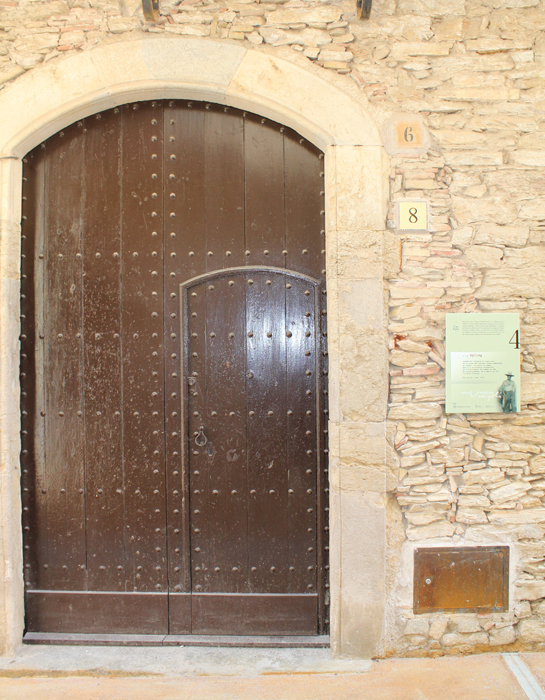
Casa de Campuig
This was the second summer house that the Vinyolis rented from the Guarro – Picart family, who had divided it into three apartments, two of which they rented out to friends. Joan Vinyoli and his family spent their summers in Begur from 1954 until 1978.
From the poem Flamed Rum
The clear, free thoughts of the high sea
blow towards the clean beaches.
Big blue fish spin in fear and suddenly fall. I put nets of words out for them,
and when the day has dropped
I will take baskets of them to the market.
In the clear night, with mullet scales,
Fleeing the crowd, I will bewitch the waves.
Pere Patxei, fix us a flamed rum:
We will drink it and change the course of the stars.
Sands of love. Sea flowing. I touch memories.
My dead tiptoe towards me.
In the Early Hours, 1981.
Begur Arts Centre
Joan Vinyoli, his family and friends would spend their evenings listening to music or taking in a show at the cinema. In September 1956 a number of events were staged for "week of the wise", involving Lluís Pericot, Joan Guarro, Carles Riba, Joan Petit, Josep Pedreira and Vinyoli himself.
From the poem Postcard to Salvador Clotas
Happy few
Whose heart never died.
All is Now and Nothing, 1970.
Bar Tothora
Joan Vinyoli and his friends would often spend time at this landmark bar in the town. Following the collection All is Now and Nothing, they referred to it informally by this name.
From the poem All is Now and Nothing
I wonder if it is not
a great consolation to say the word "rain"
and make it rain throughout a long
April morning,
where sheltered from a leaden wing laden with the storm
the song of the nightingale spirals upwards,
feminine, from the thick foliage
that tears and fills with memories
corners embroidered with dahlias.
Which garden? Which lonely yard? Which haystacks? Which canal?
The dried out tree drinks from these waters
filtered from the origins,
the shrivelled leaves are reborn, full of April eyes
and the green rises dense from the ancestral subsoil of rough stone.
Cries that I invent, that no one hears; the dead flow in hyperbole.
All is now and nothing.
All is now and nothing, 1970.

